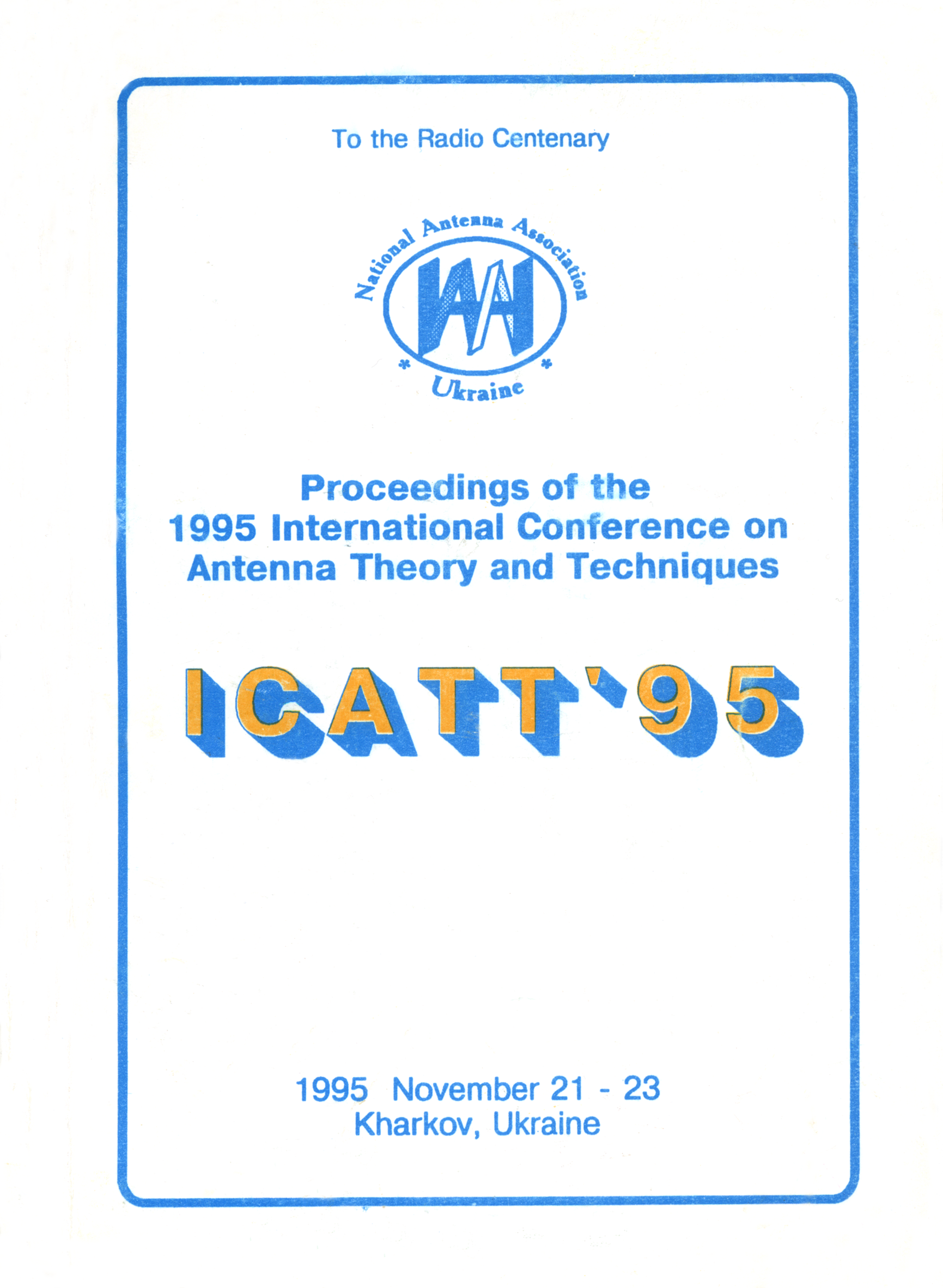Power and directional characteristics of a waveguide feed with impedance flange
DOI:
https://doi.org/10.1109/ICATT.1995.1234154Abstract
In the narrow-beam reflector antenna technologies, an important problem is obtaining the greater values of the antenna surface using coefficient with lower level of sidelobes. One of the ways of solving this problem is the creation of II-shape amplitude distribution over the radiating antenna aperture. Technically that distribution can be realized by using an impedance flanged waveguide feed. The characteristics of an open-ended circular waveguide with a flange having concentric cylindrical rims was measured. The wavequide diameter was 19.2 mm, rim width was 5.3 mm, rim thickness was 1 mm, exterior rim diameters were 34, 42 and 50 mm. The measurements were made in the band from 10.95 to 12GHz.
The aim of experiments was studying of influence of the distance between the waveguide edge and the flange on the power and directional characteristics of the feed. VSWR of the feed weakly depends on the frequency and the flange position and varies between 1.1 and 1.4. The radiator gain varies with flange displacement in oscillating manner with the period of λ/2. The gain variation band equals 4 dB. The feed radiation patterns at the maximum gain and minimum gain, with the flange positioned in front (L>0) and behind (L<0) the waveguide edge have a significant difference. In the maximum (L = -2 mm) and in the minimum (L = -10 mm) the radiator gain in H-plane approaches to that for an open- ended circular waveguide without a flange. In the E-plane with L = -2 mm, the feed pattern is narrower in low-frequency and broader in high-frequency parts of the band. The feed pattern with L=-5mm is symmetric. With L<0 in E-plane and H-plane the feed pattern is smooth and has no side and back lobes above -20 dB. With L>0, the feed pattern in H-plane is somewhat narrower than in the case of open-ended waveguide. In E-plane, the main-lobe beamwidth is smaller than in the case of an open-ended waveguide and, moreover, there are sidelobes and backlobes at the level -7 dB.

